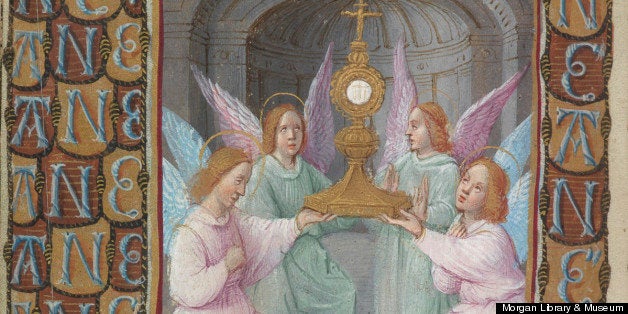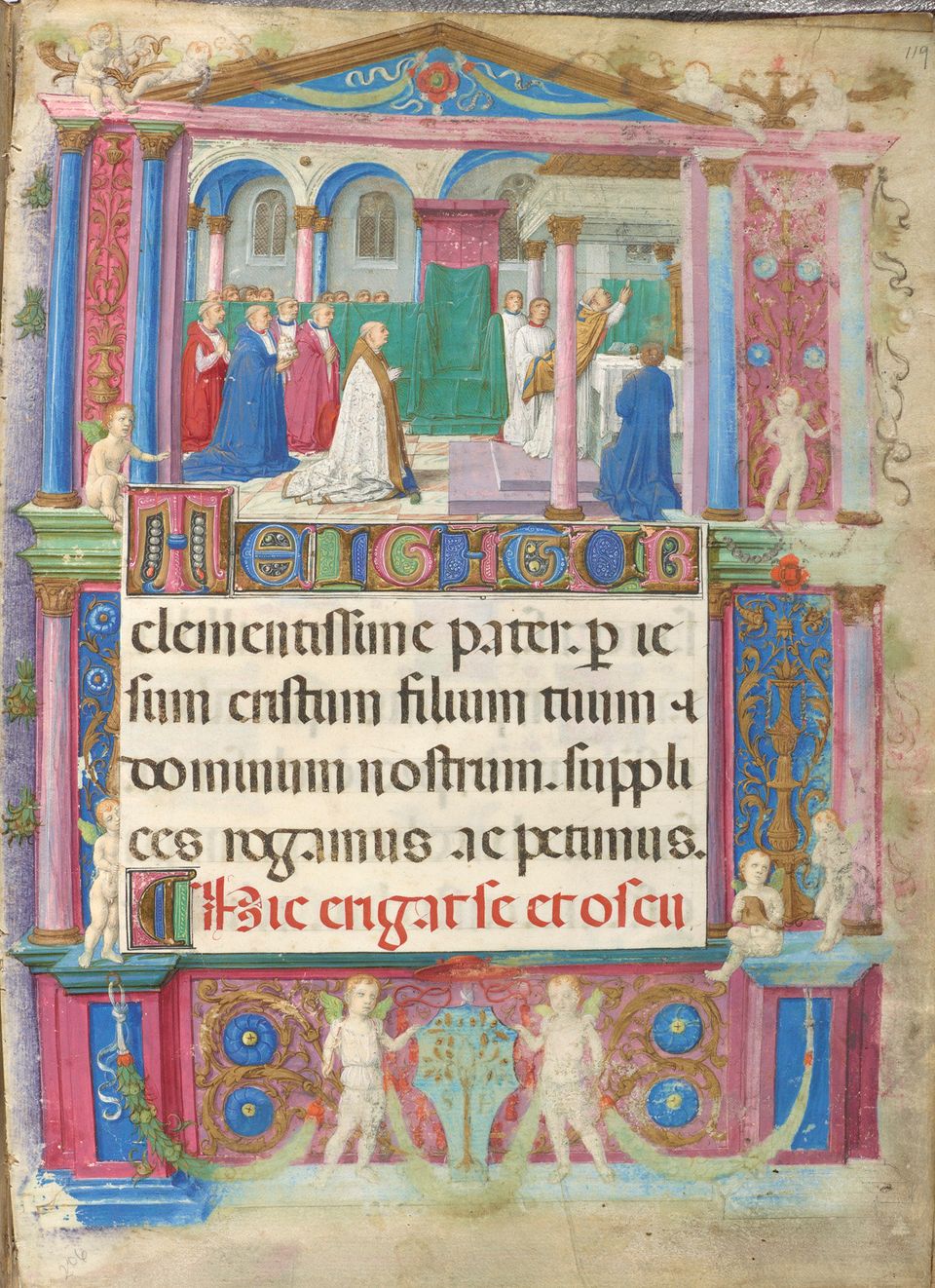
Illuminating Faith: The Eucharist in Medieval Life and Art will be on view at New York's The Morgan Library & Museum from May 17 to September 2, 2013. The following introduction comes courtesy of the exhibit's curator, Roger Wieck.
When Christ changed bread and wine into his body and blood at the Last Supper, he instituted the Eucharist and established the central act of Christian worship. For medieval Christians, the Eucharist (the sacrament of Communion) was not only at the heart of the Mass, its presence and symbolism also wielded enormous influence over cultural and civic life.
"Illuminating Faith: The Eucharist in Medieval Life and Art," on view at the Morgan Library & Museum in New York from May 17 to Sept. 2, explores this theme through more than 65 exquisitely illuminated manuscripts drawn from the Morgan's renowned collections. (Continue reading after the slideshow.)
Included among the masterpieces will be the Hours of Cardinal Alessandro Farnese, one of the greatest of all illuminated manuscripts; the Preparation for Mass of Pope Leo X, a deluxe papal manuscript that remained at the Vatican until it was looted by Napoleon's troops in 1798; a tiny prayer book created for Charles-Orland, the 3-year-old prince of King Charles VIII of France and his queen, Anne de Bretagne; and a number of superb but rarely exhibited Missals, manuscripts used by priests in the celebration of Mass.
Medieval artists did not shy away from the bloody reality of Christ's Crucifixion. Several works on view depict angels using chalices to collect the blood dripping from Christ's wounds. Others highlight its salvific effects, such as a fifteenth-century Italian illumination showing Christ's blood dripping down the shaft of the Cross onto the skull of Adam, thereby cleansing it and redeeming all of mankind from Original Sin.
As numerous images in the exhibition reveal, the Elevation -- the moment when the priest holds the Eucharist aloft -- became the climax of the Mass after 1215. Viewing the host was not only good for the soul, it was also thought to help avert evil, capable of protecting one from blindness or sudden death, for instance. Indeed, this fervor for the Host compelled some Christians of the time to run from church to church to see as many Elevations as possible.
The exhibition concludes with a fascinating exploration of Eucharistic miracles. Bleeding Hosts were the most convincing miracles that revealed -- literally -- the True Presence of Christ in the Eucharist. Such wafers were numerous in the late Middle Ages and became the focus of popular cults and pilgrimages. Bleeding hosts also resulted in Jewish persecution -- the dark flip side of medieval Eucharistic devotion -- since Christians believed that wafers bled following desecration by Jews. In the 19th century, the mystery of the bloody host was solved. The fungus, micrococcus prodigiosus, a microscopic organism, was identified. Growing on bread, it turns red and liquefies, creating the blood on miraculous wafers.
